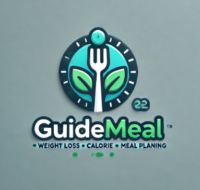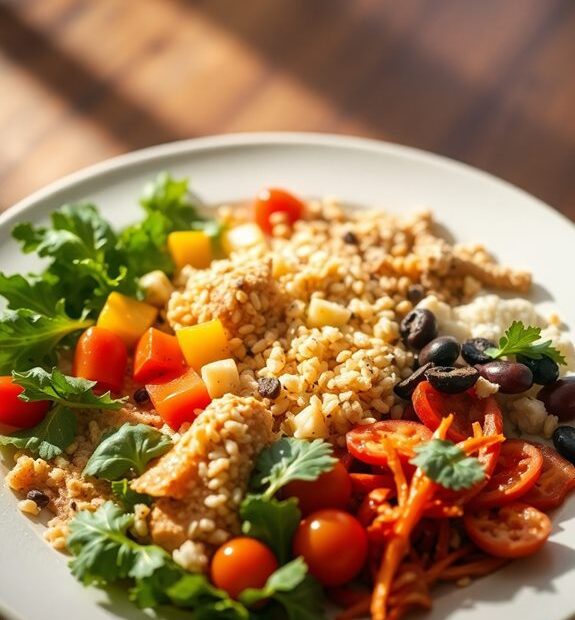Creating a balanced plate is super important for your health and weight loss! Start by filling half your plate with veggies and fruits for vitamins and fiber. Next, add a quarter of lean protein like chicken or beans to help build muscle. Finally, fill the last quarter with healthy carbs like whole grains. Don't forget to drizzle a bit of healthy fat from sources like olive oil or nuts. Using smaller plates can help you control portions too. Are you ready to boost your meals? With these simple tips, you can enjoy tasty food while feeling great! Stick around for more helpful ideas! 🍽️
Key Takeaways
- Fill half your plate with a variety of colorful fruits and vegetables to ensure nutrient density and variety in your diet.
- Allocate one quarter of your plate to lean proteins, such as chicken, fish, or plant-based options, to support muscle repair and satiety.
- Use the remaining quarter for healthy carbohydrates like whole grains or legumes to maintain energy levels and stabilize blood sugar.
- Incorporate healthy fats, such as avocados or nuts, in moderation to promote heart health and keep you feeling full longer.
- Practice portion control by using smaller plates or measuring food to help manage caloric intake effectively for weight loss.
Understanding Macronutrients
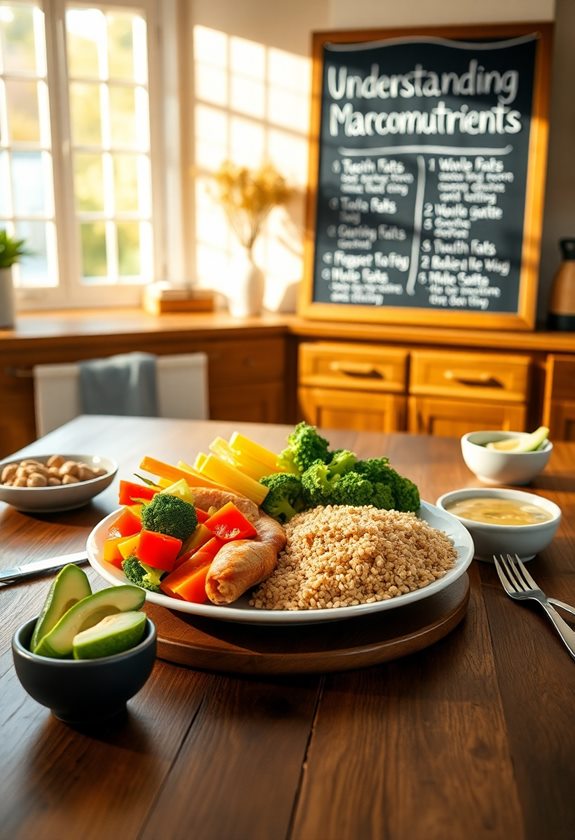
Macronutrients are the building blocks of your diet, essential for fueling your body and supporting overall health. But what exactly are they? Simply put, macronutrients are nutrients your body needs in large amounts: carbohydrates, proteins, and fats. Each one plays a unique role in keeping you energized and healthy.
Carbohydrates are your body's main energy source. Think of them as the fuel for your engine. Ever notice how you feel sluggish after skipping breakfast? That's likely because you missed out on those essential carbs. Additionally, choosing low-carb options, like certain protein bars, can help maintain stable blood sugar levels, which is fundamental for weight management and energy balance.
Proteins are important for building and repairing tissues. They help your muscles recover after a workout. Do you ever feel sore after exercising? Eating enough protein can help with that! Incorporating high-protein snacks, such as Quest protein bars, can provide the necessary amino acids for muscle growth and recovery.
Fats are also fundamental. They support cell growth and protect your organs. Healthy fats, like those in avocados and nuts, can keep you feeling full longer.
Portion Control Strategies
Understanding macronutrients lays the groundwork for effective portion control strategies, which can greatly impact your nutritional goals. Have you ever felt overwhelmed by the idea of how much to eat? Don't worry; it's simpler than it seems! One effective way to assist with portion control is to utilize portion-controlled containers, which are designed to simplify meal planning and caloric intake management. Another strategy is to use smaller plates. When you serve food on a smaller plate, it can trick your brain into thinking you're getting more, making it easier to stick to proper portions. 🤔 Another tip is to measure your food at first. Using measuring cups or a food scale can help you get a feel for what a balanced portion looks like.
You might also try the "half-plate rule." Fill half your plate with protein and healthy carbs, and save the other half for veggies. This can help you visualize your portions better.
Lastly, listen to your body. Are you still hungry after a meal? It's okay to eat a little more! On the other hand, if you're full, stop eating. You're in control. These simple strategies can help you manage your portions and reach your nutrition goals. Remember, it's about balance, not perfection!
Incorporating Fruits and Vegetables
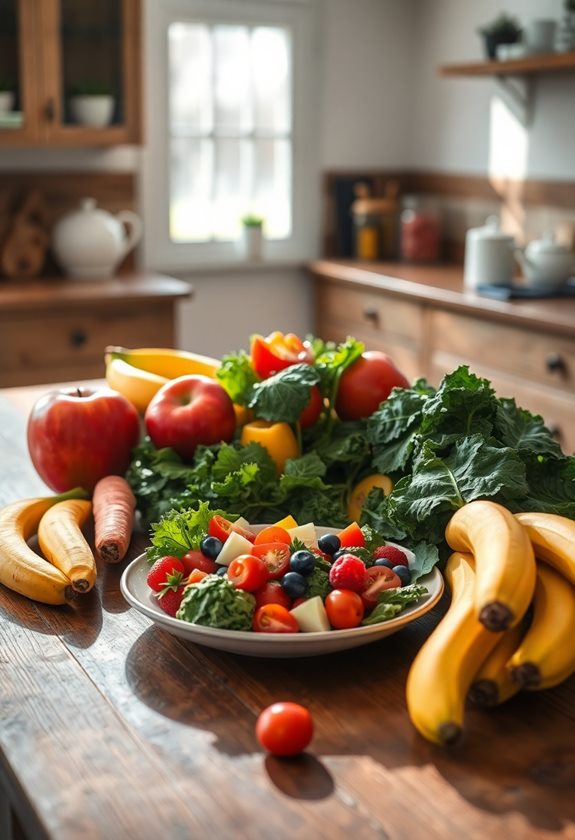
To maximize your nutrition, incorporating a variety of fruits and vegetables into your meals is essential. Think about it—when was the last time you filled half your plate with these colorful foods? Not only do they add flavor, but they also pack your meals with vitamins, minerals, and fiber. Utilizing organic ingredients can further enhance the nutritional value and flavor profile of your salads.
Start with what you enjoy! Do you like crunchy carrots or sweet strawberries? Try adding them to your snacks or salads. You could even throw some spinach into your smoothies for a nutrient boost without changing the taste much.
Aim for a rainbow on your plate. Each color represents different nutrients, so mixing things up helps guarantee you're getting a wide range of benefits. For example, orange peppers are full of vitamin C, while leafy greens are great for iron.
And don't forget about convenience! Pre-cut fruits and veggies can make it easier to grab a healthy snack. Have you ever tried a fruit salad for breakfast? It's a delicious way to start your day!
Incorporating fruits and vegetables doesn't have to be hard. Just start small, and you'll notice the difference in your energy and overall health.
Healthy Protein Sources
Protein plays an essential role in building and repairing tissues, making it vital for your overall health. But do you know what healthy protein sources you should include in your diet? Let's explore some great options!
First, lean meats like chicken and turkey are fantastic choices. They're low in fat and high in protein, helping you feel full longer. Fish, especially fatty types like salmon, not only provide protein but also offer heart-healthy omega-3 fatty acids.
If you prefer plant-based options, legumes such as beans and lentils are excellent. They're packed with protein and fiber, which can keep you satisfied. Tofu and tempeh are also great sources for those looking to cut back on meat.
Don't forget eggs! They're versatile, easy to cook, and loaded with nutrients. Greek yogurt is another protein-rich option that works well as a snack or breakfast.
Balancing Fats in Your Diet
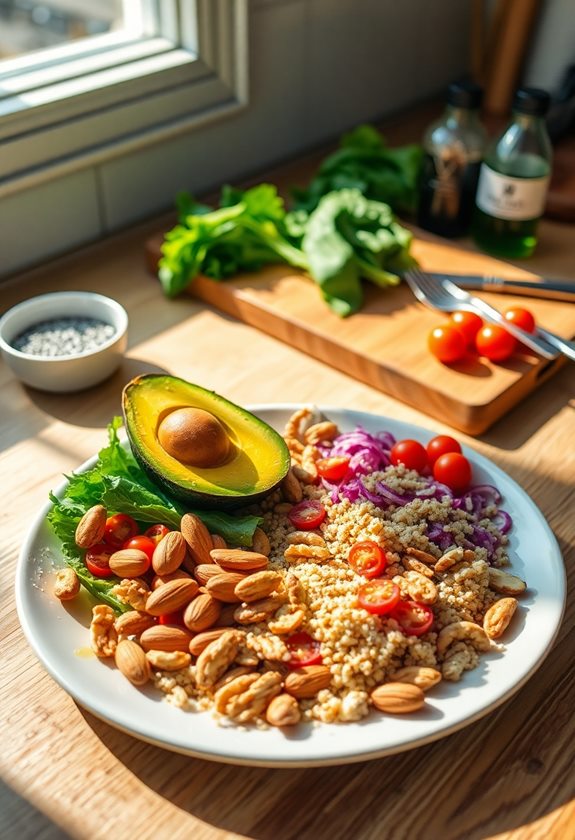
Finding the right balance of fats in your diet is essential for maintaining overall health. But how do you know which fats to include? It's all about choosing the right types and amounts!
Healthy fats, like those from avocados and nuts, can help improve your heart health. But beware of trans fats found in processed snacks — they can be harmful. So, how do you strike that balance? Here's a simple table to guide you:
| Type of Fat | Examples |
|---|---|
| Healthy Fats | Avocados, Olive oil, Nuts |
| Moderate Fats | Cheese, Dark chocolate |
| Limit | Butter, Red meat |
| Avoid | Fried foods, Processed snacks |
| Balance | Mix healthy fats into meals |
Aiming for about 20-35% of your daily calories from fats is a good target. Remember, it's not just about cutting fats but choosing the right ones! Next time you prepare a meal, think about adding some healthy fats to your plate. Your body will thank you! 🍽️
